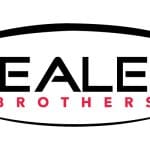After years of failure in trying to break into New York City, Wal-Mart is poised for success this time around. The critical differences in the giant retailer’s approach are instructive for all of us.
The business problem Wal-Mart faced is this: How do you grow without cannibalizing your existing stores? That’s a good question for any store or business that has multiple outlets. Will two stores bring twice the revenue as the masses flock to buy your product? Or maybe just 20 percent or 30 percent more revenue, as some customers shift to the other location?
New areas needed
If it is to grow within the United States and avoid just shifting business, Wal-Mart needs to find areas without stores. Put another way, according to Advertising Age, the United States has one Wal-Mart per 83,000 people. If that density held for New York City, the Big Apple would have close to 100. In decades past, Wal-Mart gave up and walked away on breaking into NYC.
Employee testimonials
This time, Wal-Mart began the marketing and public relations effort months ago. It’s using employee testimonials about Wal-Mart as a good place to work. Jobs are a potent argument these days, and woe to those who turn them away.
In another shift, Wal-Mart — famously and with good reason over the past years regarded as anti-union — has developed alliances with the building trade unions. It was a critical point in winning permission to build in Chicago, and it will be critical here.
(Too often unremarked in our area is the fact that the building trades here have been very proactive in recent months on the economic development front, even sharpening their pencils to help attract business. If a big project is lost, I doubt it will be the cost of construction that did it in.)
Wal-Mart has adeptly cast its opponents as special interests: “You don’t ask the special interests or the political insiders for permission to use the bathroom. So why should they decide where you shop?” said one mailer. Radio ads hit the same theme. Potent stuff.
To recap: Good marketing and PR should be campaigns. They often take months to put in place. Don’t rely on tired arguments and alliances that might not hold. Recognize when the ground is shifting. Wal-Mart circled around to the side door; in New York City, it looks like it’s open.
Josh Sommers is president and CEO of Focus Media, a leading Hudson Valley advertising and public relations agency. He can be reached at josh@advertisingandpr.com or 294-3342, ext. 303. Read his blog at www.advertisingandpr.com. His column appears Fridays.



